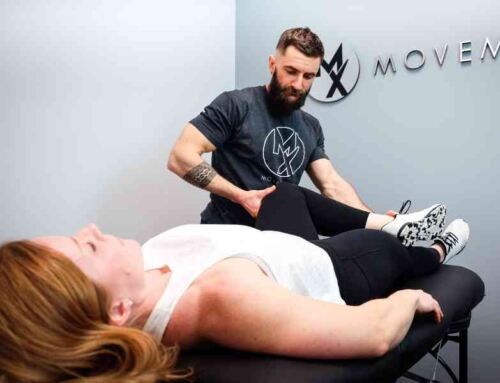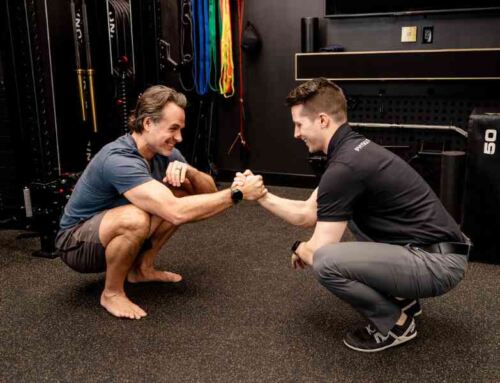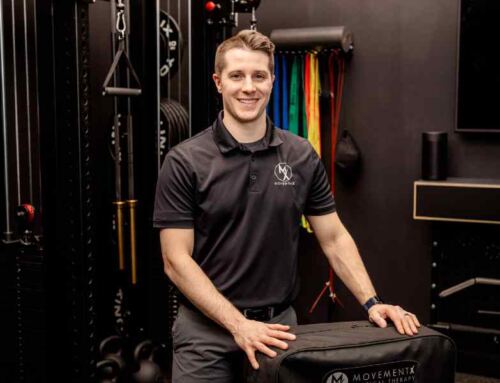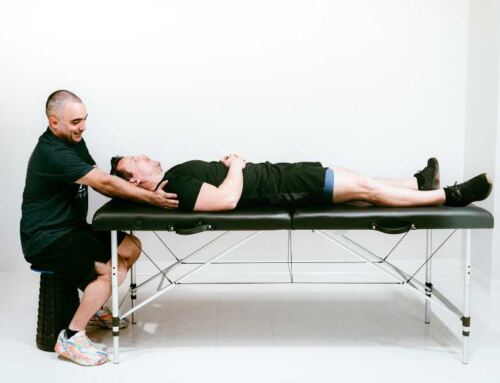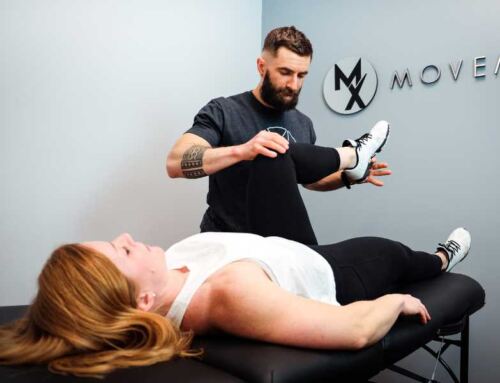A Physical Therapist’s Guide to Low Back Pain Treatment
In any given year, research shows that 1 in every 3 Americans will experience lower back pain. Of those, approximately 24-33% will experience another episode of pain later on.
Low back pain can have a tremendous impact on your daily life. It is the most common reason for health care visits among musculoskeletal conditions and the leading cause of disability worldwide. It limits our ability to walk with our spouse, finish a round of golf with our colleagues, or bend down to play with our grandkids.
At MovementX, we know what the research says—when you experience low back pain, see a physical therapist first. Our nationwide team of mobile physical therapists specialize in the identification, treatment, and prevention of low back pain. Working with a PT first can decrease your likelihood of receiving unwanted medications, costly imaging, or unnecessary surgery.
Above all, we know that knowledge is empowering. That’s why we’ve put together this comprehensive guide to help you better understand the complexity of lower back pain, the importance of an accurate diagnosis, and the best research-backed options for treatment available.
What are the Signs, Symptoms, and Causes of Low Back Pain?
Symptoms of low back pain can vary from muscle aches along your spine to burning sensations that zing down your leg. Your lower back region consists of many anatomical parts—your vertebrae, the pelvis and sacrum, muscles, tendons, ligaments, and nerves—that must all work together to enable healthy movement. When low back pain is experienced, the root cause is often neuromusculoskeletal in nature, meaning that symptoms generally worsen with certain types of activity or prolonged periods of inactivity. The good news is that movement-related pain often has a movement-related solution.
How Important is an Accurate Diagnosis?
Because its symptoms can vary so widely, low back pain can be tricky to accurately diagnose. In fact, research has shown that only 10% of people find out the root cause of their back pain because there are many factors at play. Symptoms can sometimes masquerade as a leg injury, with the nerves of the lumbar and sacral region sending or receiving signals to and from your leg tissues. Other times, the root cause of lower back pain may actually be in your thoracic spine, hips, or pelvic floor. Determining the precise cause of low back pain is the first step in treating it and recovering from it as effectively as possible. That’s what all MovementX physical therapists are uniquely trained and certified to do.
In rare instances, what seems like musculoskeletal low back pain can actually be something more sinister and emergent. Your PT will screen you for the following “red flag” symptoms that warrant a medical emergency…
- Unexplained weight loss
- Changes in bowel/bladder function
- Fever
- Significant trauma to the spine
- Pain that does not change with activity level
What Treatment Choices do I Have?
Self-Care
If you’re reading this article, you’ve clearly begun your research on the first line of treatment—self-care. Being proactive about the pain you’re experiencing (as opposed to bedrest and waiting for the pain to go away) can sometimes lead to a quick and simple resolution of your symptoms.
Physical Therapy
Working with a professional physical therapist has been shown to be the next best step—or even the best first step—when it comes to outcomes and cost savings. Read on to the next section, where we will go into more detail about how exactly a physical therapist can help you with your low back pain.
Referral to a Physician or other Health Professional
Your physical therapist may recommend also receiving treatment from another health professional, either as an alternative or an adjunct to PT treatment. This may include a referral to an orthopedist (Medical Doctor or Doctor of Osteopathy), primary care physician, neurologist, regenerative medicine doctor, or pain management specialist.
Medications
If self-care and physical therapy alone are not providing symptom relief, then speak with a trusted healthcare provider regarding potential medications you may consider to address your symptoms. Be sure to also discuss what is a normal timeline to wean off of the medication you are prescribed.
Imaging
If your physical therapy plan of care or other conservative treatment was only marginally successful at helping you attain your goals, then you may also consider asking your health care provider if imaging (X-Ray, MRI, etc.) is appropriate for you. Imaging is recommended after conservative treatment for several reasons, such as the fact that imaging performed at the start of care can sometimes falsely attribute normal age-related findings as the root cause of your symptoms. Furthermore, studies have shown that people who get imaging before physical therapy treatment spend over $4,000 more over the course of treatment.
Alternative Wellness
Some people also find TENS (transcutaneous electrical nerve stimulation) units, massage therapy, acupuncture, chiropractic care, pilates, and yoga beneficial for treating lower back pain.
Surgery
Surgery is rarely needed for low back pain symptom relief, and is the most invasive and costly treatment. The national average cost for a lumbar spinal fusion surgery, for instance, is over $50,000. Be sure to explore all other options before beginning to consider surgery.
How Can a Physical Therapist Help?
A physical therapist will take a holistic approach when evaluating your low back pain and creating an individualized treatment plan with you. During your first session, you will talk about your goals, symptoms, health history, and activity level. Your physical therapist will examine how you move, assess your range of motion, test your strength, and provide education and specialized treatment along the way. Working with a physical therapist empowers you to take control of your symptoms through an individualized symptom management program you can practice on your own to help get you back to the activities you love.
How Long Does it Take?
Typically, conservative treatment should make a noticeable improvement in your symptoms within 30 days. With the right treatment, studies have shown that nearly 90% of low back pain episodes resolve in a few months. If you are working with a physical therapist, they will safely guide you as you increase your level of activity and function. They will also provide you with strategies to prevent symptoms from recurring.
To request care with a MovementX physical therapist near you and start moving and living your best, sign up today.
References:
Back pain – Symptoms and causes. Mayo Clinic. https://www.mayoclinic.org/diseases-conditions/back-pain/symptoms-causes/syc-20369906
Delitto A, George SZ, Van Dillen L, et al. Low back pain: clinical practice guidelines linked to the international classification of functioning, disability, and health from the orthopaedic section of the american physical therapy association. J Orthop Sports Phys Ther. 2012;42(4):A1-A57. https://www.jospt.org/doi/pdf/10.2519/jospt.2012.42.4.A1
Managing low back pain: exercise, manual therapy, and education. J Orthop Sports Phys Ther. 2021;51(11):535-535. https://www.jospt.org/doi/10.2519/jospt.2021.0508


